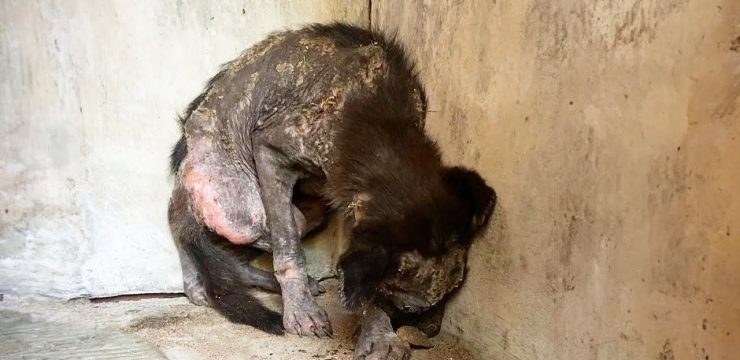Minnesota health officials have issued an urgent warning after an unvaccinated child infected with measles visited the Mall of America while contagious. The child, a resident of Dakota County, spent four hours at the mall’s theme park on May 24, between 5 p.m. and 9 p.m. Health experts are now concerned that thousands of visitors might have been exposed to this highly infectious disease during that time frame.

What makes this situation even more troubling is that the source of the child’s infection remains unknown. Jessica Hancock-Allen, head of the infectious disease division at the Minnesota Department of Health, called the case “worrying” and warned that it could signal a broader community spread. State health officials are urging anyone who was at the Mall of America during those hours to monitor themselves for symptoms of measles through June 14. Individuals who are unvaccinated or have never had measles are at the highest risk of infection and face greater chances of severe complications. In response, the Mall of America has enhanced its cleaning protocols and is working with health authorities on contact tracing to identify anyone who may have been exposed.
In early June, Minnesota confirmed two new cases of measles, bringing the state’s 2025 total to four. One case involved the aforementioned unvaccinated child at the mall, while the other affected an adult in Washington County who contracted measles during domestic travel outside Minnesota. The adult’s vaccination status remains unknown. Both individuals are recovering at home and being monitored by public health professionals. Officials are currently reaching out to people who may have come into contact with the patients to prevent further spread. In 2024, Minnesota recorded 70 measles cases, 40% of which required hospitalization due to complications.
Nationwide, the measles outbreak has escalated to critical levels. As of June 5, 2025, there have been 1,168 confirmed measles cases across 34 states and territories—quadruple the total reported in 2024. Seventeen major outbreaks are responsible for 89% of the cases so far this year. Most of these outbreaks are happening in tightly-knit communities with low vaccination rates, which allow measles to spread rapidly.
Tragically, three deaths have been reported during this year’s outbreak. Two of the victims were unvaccinated school-aged children in Texas, and the third was an unvaccinated adult in New Mexico who died before testing positive for measles. All three had not received the MMR (measles, mumps, rubella) vaccine. The current outbreak is approaching the severity of the 2019 outbreak, which saw 1,274 cases—the highest number in decades. Public health experts warn that if vaccination rates continue to drop, measles could once again become endemic in the United States.
One of the driving forces behind this resurgence is the steady decline in vaccination rates since the start of the COVID-19 pandemic. In 2019, over 92% of Minnesota’s kindergarteners were fully vaccinated with the MMR vaccine. By 2024, that figure had dropped to 87%, falling below the 95% threshold required for herd immunity. Without this community-level protection, outbreaks become much more likely.
Out of 2,066 counties evaluated nationwide, 1,614 (about 78%) reported a decrease in MMR vaccination coverage. Only four states—California, Connecticut, Maine, and New York—saw slight increases in their median vaccination rates. This overall decline has been fueled by vaccine hesitancy, widespread misinformation, and reduced access to preventive care during the pandemic. Researchers at Stanford Medicine have warned that if this trend continues, measles could once again become endemic within 20 years. Even a small further drop in vaccine coverage could accelerate that timeline. On the flip side, increasing vaccination rates—even modestly—could prevent a widespread resurgence.
Measles is incredibly contagious. It spreads through respiratory droplets in the air when an infected person coughs or sneezes. The virus can remain active in the air for up to two hours after the infected person leaves. Due to this, about 90% of unvaccinated people exposed to the virus will become infected. Symptoms generally appear 7 to 14 days after exposure and often begin with high fever, cough, runny nose, and red, watery eyes. Small white spots, known as Koplik spots, may also appear inside the mouth a couple of days after symptoms begin. A red, blotchy rash typically follows three to five days later, starting on the face and spreading down to the rest of the body. The fever may spike even higher—sometimes up to 105.8°F—as the rash progresses.
Infected individuals are contagious for about eight days, starting four days before the rash appears and continuing until four days after. This long window of infectiousness, combined with the virus’s ability to linger in the air, makes measles one of the most contagious diseases known.
Certain groups are especially at risk for severe complications. Babies under 12 months old, who are too young to receive the vaccine, depend on herd immunity to stay safe. Unvaccinated children under age five also face a much higher risk of severe illness or death. Pregnant women who lack immunity are vulnerable to miscarriage, early delivery, or even fatal complications. People with weakened immune systems, including cancer patients and organ transplant recipients, are also at elevated risk.
Complications from measles are common and sometimes severe. Around 6% of patients develop pneumonia, 7% suffer from ear infections, and 8% experience diarrhea. In some cases, the infection can lead to encephalitis (brain inflammation), seizures, or blindness. Around one in every 1,000 children with measles will experience brain swelling that can cause permanent damage. About 20% of unvaccinated individuals with measles require hospitalization, and 1 to 3 out of every 1,000 infected children may die from the disease. These figures reinforce the importance of vaccination, not just for individual protection, but for the safety of the entire community.
The MMR vaccine remains the most effective tool for preventing measles. When administered properly, two doses offer about 97% protection. Children should receive their first dose between 12 and 15 months of age and the second between ages 4 and 6. While a single dose provides 85% to 95% protection, the second dose ensures nearly full immunity and helps prevent primary vaccine failure. Adults born before 1957 are generally considered immune due to natural exposure during previous widespread outbreaks. Those born afterward should verify their immunity through medical records or testing.
Healthcare providers play a critical role in halting the spread of measles. They are advised to use airborne precautions with any suspected cases and to isolate patients for four days following the rash’s appearance. The CDC has also issued nationwide alerts to raise awareness among healthcare professionals.
Ultimately, the best way to prevent future measles outbreaks is to maintain high levels of vaccination. Achieving and preserving a 95% vaccination rate is essential for protecting the most vulnerable among us. Clear communication about the dangers of measles and the benefits of vaccination—combined with efforts to counter misinformation—can help restore public confidence in immunization and prevent the return of a disease that should no longer threaten lives.





